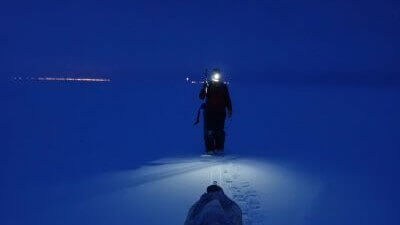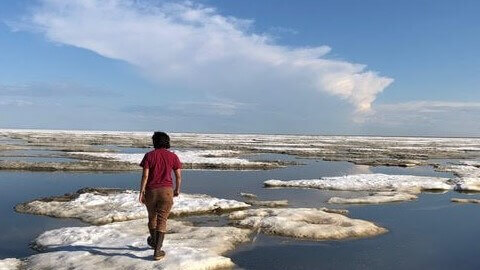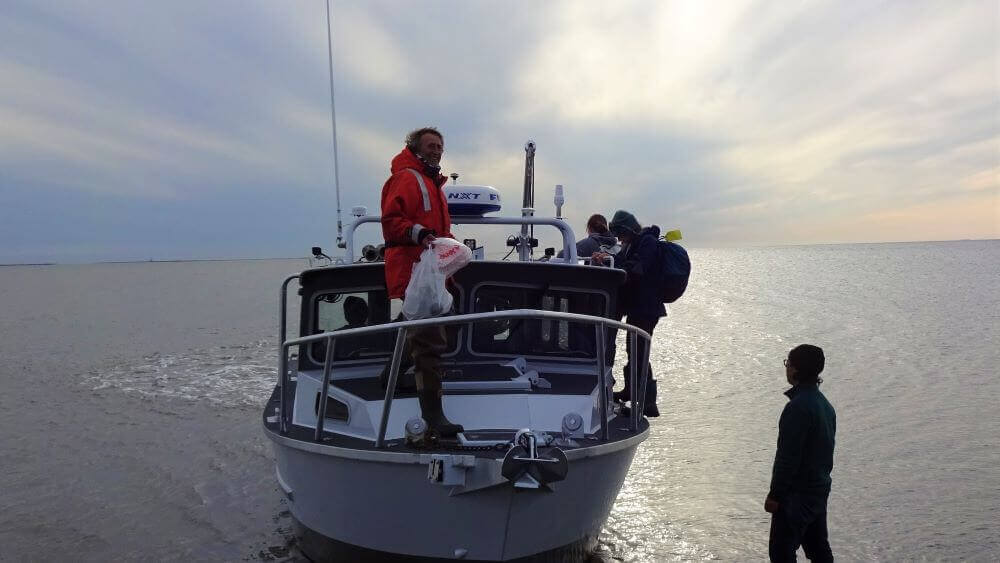Beaufort Lagoon Ecosystems LTER is a new Long Term Ecological Research* site. We use diverse methods to study lagoons and other aquatic sites along the northern Alaskan Arctic coast. Our interests include land/sea interactions in these unique ecosystems, their biogeochemical and biological makeup, their seasonal dynamics and long-term changes, and using our expertise to serve local communities.
* We joined the U.S. LTER network in 2017. The northernmost in the 28-site network, BLE LTER will address gaps in our understanding of the rapidly changing Arctic. We collaborate closely with other sites to do the best science and to promote open research.
By the numbers
12
investigators
from six universities
3
field seasons
each year
3
research nodes
Utqiaġvik, Deadhorse, Kaktovik
530
kilometers
of coastline studied
Our study sites
Coastal lagoons are among the most productive habitats and make up more than 10% of the land-sea interface worldwide. The Beaufort Sea lagoons are complex and productive ecosystems. These systems encompass more than half of the Beaufort Sea coast, providing food and habitat for large populations of migratory fish and waterfowl essential to the culture of northern Alaska's Iñupiaq communities. Dozens of rivers, the 'highways of Alaska,' altogether making up a vast drainage basin, flow into the Beaufort Sea through these lagoons.
Zoom in and click to see what makes each lagoon unique.
Seasons in the lagoons
Dramatic seasonality is a big reason why we think the lagoons are so fascinating. The time of year also influences everything we do in terms of field logistics; each season brings its own challenges and rewards.

Frozen over
In winter, ice completely covers the lagoons. By April, when we sample, the ice is nearly 1.7 m thick. We use snowmobiles to reach our study sites and then drill holes to collect water and sediment.
Our to-do list
Measure sea-ice properties
Sample the under-ice environment

Ice break-up
Spring comes rapidly to the Arctic once daylight lengthens. Ice break-up may happen in a matter of days and can make field work treacherous. We sample in June to represent spring conditions.
Our to-do list
Sample rivers near their peak flow
Obtain water mixing data in the lagoons

Open water
In summer, the lagoons exchange materials with the Beaufort Sea freely. Ecosystem productivity peaks around this time. We sample in August via boat trips to represent summer conditions.
Our to-do list
Retrieve and redeploy moored instruments
Sample eroding coastal bluffs
Project news
The Lagoon Exchange: Winter 2024 Edition
In the latest issue of The Lagoon Exchange, you can see highlights of our recent science education activities, plans for 2024, and a quick story about how our data provide clues about the cause of a recent fish kill. You can find all issues of the newsletter in The Lagoon Exchange archive.
First lesson plan from BLE's Research Experience for Teachers grant
BLE LTER recently received a NSF Research Experience for Teachers (RET) grant; thanks to this funding, in 2022 our researchers had the opportunity to work with two teachers Maria McDonel and Sarah Renteria on our outreach and education programs on the North Slope. This collaboration will also result in shared products such as lesson plans. Take a look at the first, a "Data Nuggets" lesson plan or more about our educational efforts.
BLE LTER research featured by ROV manufacturer Deep Trekker
Our project lead Ken Dunton recently spoke with Deep Trekker about BLE's use of their remotely operated vehicles (ROVs) in our research. Certain features in particular such as the high-definition images and the navigation system have been useful in the Arctic conditions! Read the article on Deep Trekker's website.
